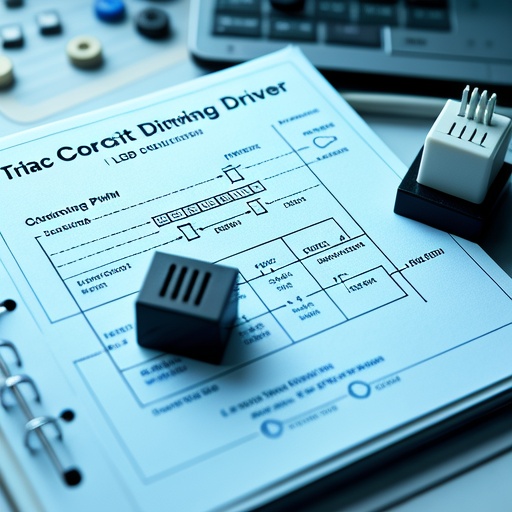Why Should You Care About the Triac Dimming Power Supply?
Triac dimming power supplies have revolutionized the way we interact with light, offering seamless control over brightness levels in both residential and commercial spaces. At their core, these sophisticated devices leverage TRIAC technology to modulate the electrical current feeding into dimmable LED lights, enabling smooth transitions from full brightness to complete darkness and every shade in between.
What is a Triac Dimming Power Supply?
A triac dimming power supply is essentially an advanced electronic component designed to work in tandem with dimmable LED drivers. Unlike traditional on/off switches, it facilitates variable lighting output by adjusting the phase angle of the AC waveform through Pulse Width Modulation (PWM) control. This sophisticated method allows for precise manipulation of light intensity without color shift or flicker, ensuring a consistent and visually pleasing dimming experience.
The Magic Behind TRIAC Technology
Central to this innovation lies the TRIAC – a semiconductor device capable of conducting current in both directions when triggered. In the context of a dimming power supply, the TRIAC acts as a high-speed switch that rapidly turns the load (the LED lights) on and off thousands of times per second. By varying the duration of these 'on' cycles relative to the 'off' cycles, the average power delivered to the lights is adjusted, resulting in perceived changes in brightness.
PWM Control: The Brains of Dimming
Pulse Width Modulation (PWM) is the key control strategy employed by triac dimming power supplies. It involves generating a square wave signal where the duty cycle (the proportion of time the signal is high versus low) determines the effective power supplied to the LEDs. As users adjust their dimmer switches, the PWM controller within the power supply dynamically alters this duty cycle, translating physical adjustments into finely tuned lighting levels.
Benefits Beyond Illumination
Adopting a triac dimming power supply goes beyond mere aesthetics; it also contributes significantly to energy efficiency. By allowing users to dial in the exact amount of light needed, unnecessary energy consumption is minimized, making it an eco-friendly choice. Moreover, compatibility with a wide range of dimmable LED drivers ensures flexibility in design and application, further enhancing its appeal in modern lighting installations.
Illustrating the Concept

To visualize this intricate dance of electrons, imagine a graph plotting light output against the dimming level. The curve would start at maximum brightness when the TRIAC is fully conductive and gradually taper off as the PWM signal reduces the conduction time. This graphic representation not only simplifies the understanding of triac dimming but also underscores its precision and effectiveness in managing light.
In conclusion, a triac dimming power supply stands as a testament to technological advancement in lighting control. Its integration of TRIAC technology and PWM control offers unparalleled dimming capabilities, energy savings, and user experience, solidifying its position as the heart of contemporary lighting systems. As we continue to seek smarter, more sustainable ways to illuminate our world, understanding and harnessing the power of triac dimming becomes ever more essential.
 In heritage architecture prote
In heritage architecture prote
 When small-batch customization
When small-batch customization
 Have the electromagnetic emiss
Have the electromagnetic emiss
 When Triac dimmable power supp
When Triac dimmable power supp
